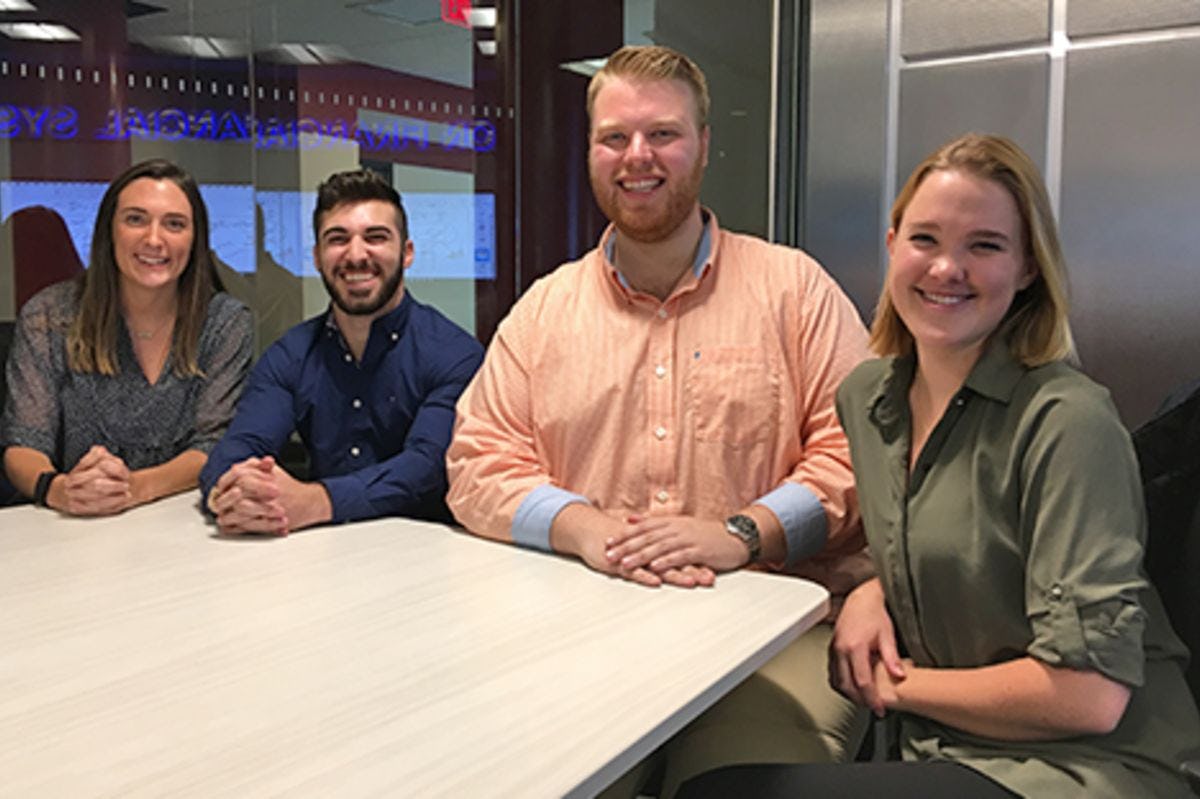In Project for Thomson Reuters, Critical Thinking Skills Helped Stevens Students See Flaws in Company’s Findings
Transfer pricing is a relatively new area in the tax world, so when Thomson Reuters wanted its suite of client solutions evaluated, they turned to business students at Stevens Institute of Technology, who prized for their skills in analytics and technology.
But for the team working on the project, their most valuable skills turned out not to be data analysis. Rather, it was their ability to think critically about data — and their confidence in delivering bad news in a presentation to managers — that helped them succeed.
Like her teammates, Amy DiGerolamo has given hundreds of presentations in class, and the confidence that comes from often being in front of the class, instead of in her seat, was crucial when she had to tell managers something was wrong with the company’s data.
Stevens professors like Dr. George Calhoun and Dr. Jonathan Kaufman “are very particular people about presentations, but it teaches you a lot,” said DiGerolamo, who is studying Quantitative Finance and has accepted an offer with BlackRock. “We’ve had presentations where every single thing on every slide was questioned — every number, word, fact, statement. Now, in any presentation, I’m confident because I know how to prepare — ask me a question about any word on my slides, and I will tell you exactly where it came from.”
A data mismatch
DiGerolamo and four other students at the School of Business were consulting with the professional services and media giant on a project to be showcased at the May 2 Innovation Expo. Their assignment was to evaluate Thomson Reuters’ suite of transfer pricing tools for clients — with an eye to both their usefulness and other products in the market — but after collecting their own data and matching it up against what the company provided them, they saw trouble.
“Because transfer pricing is new, the company is more focused on capturing market than they are on their data collection,” said Mike Kaspar, who is graduating with a Business & Technology major and a graduate degree in Enterprise Project Management. “A lot of our initial recommendations involved assumptions based on the data. We had to tell them that we didn’t know if the data were representative of the entire market. Once we explained our interpretations of the data, they said, ‘Oh, you’re right, we need to take another look at this.’ ”
Transfer pricing involves a company selling its products to its own subsidiaries elsewhere in the world in order to take advantage of more favorable tax climates. Among other drivers, controversy over transfer pricing is increasing as a result of increased attention from revenue authorities in a complicated political landscape.
In the early part of the project, the team — which also consists of Quantitative Finance students Kaitlin Goncalves, Jonathan Hatter and Lindsey Metz — worked with advisor Dr. Jim Biagi to better understand the concept of transfer pricing. They also interviewed a number of Thomson Reuters employees and analyzed the market to evaluate how potential clients, and competitors, perceive Thomson Reuter’s strength in this space.
Pivoting to marketing plan
When the data didn’t line up, the students and Thomson Reuters agreed to a reset, with the students instead looking at how the company can effectively market its transfer pricing offerings in a marketplace that’s growing more competitive. The team is preparing its final recommendations for Thomson Reuters now, and will showcase its findings at the Innovation Expo.
“We’re trying to look at budgeting and see how they market themselves, where that money is being spent, and try to recommend channels that make the most sense for them,” Goncalves said. “We’re also looking at their actual messaging to see if it matches the maturity of the market.”
The Quantitative Finance program is celebrated for its emphasis on mathematics, computer science, business and finance. The team’s ability to make the leap into a comprehensive marketing analysis is part of what makes Stevens so special.
“Thomson Reuters is both an information company and a technology company — so it’s very much like the business programs here at Stevens,” said Hatter, who has accepted an offer at UBS. “It seems very natural for them to want to work with students from Stevens, and in fact, a lot of the people we’re working with at Thomson Reuters are Stevens alumni.”




